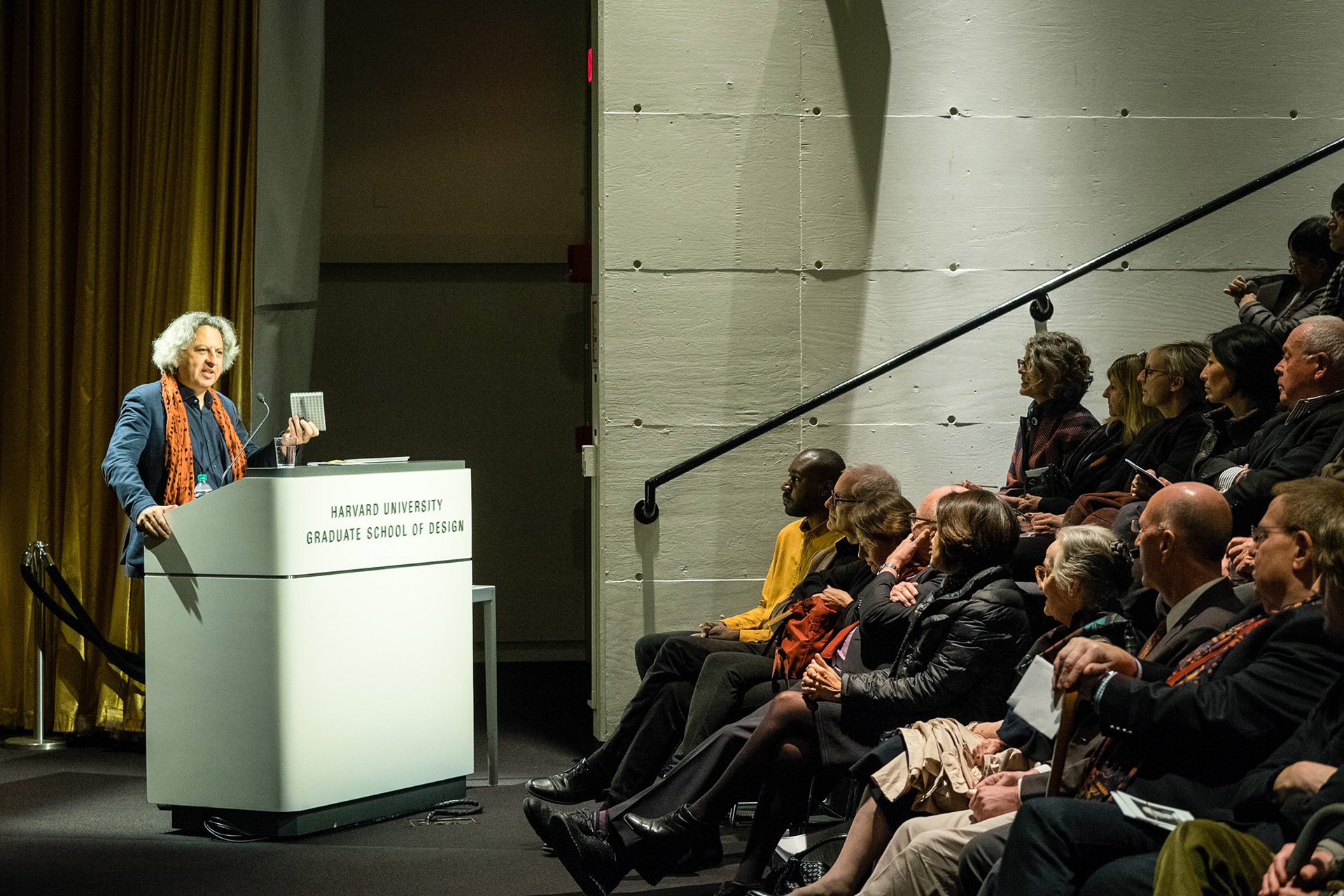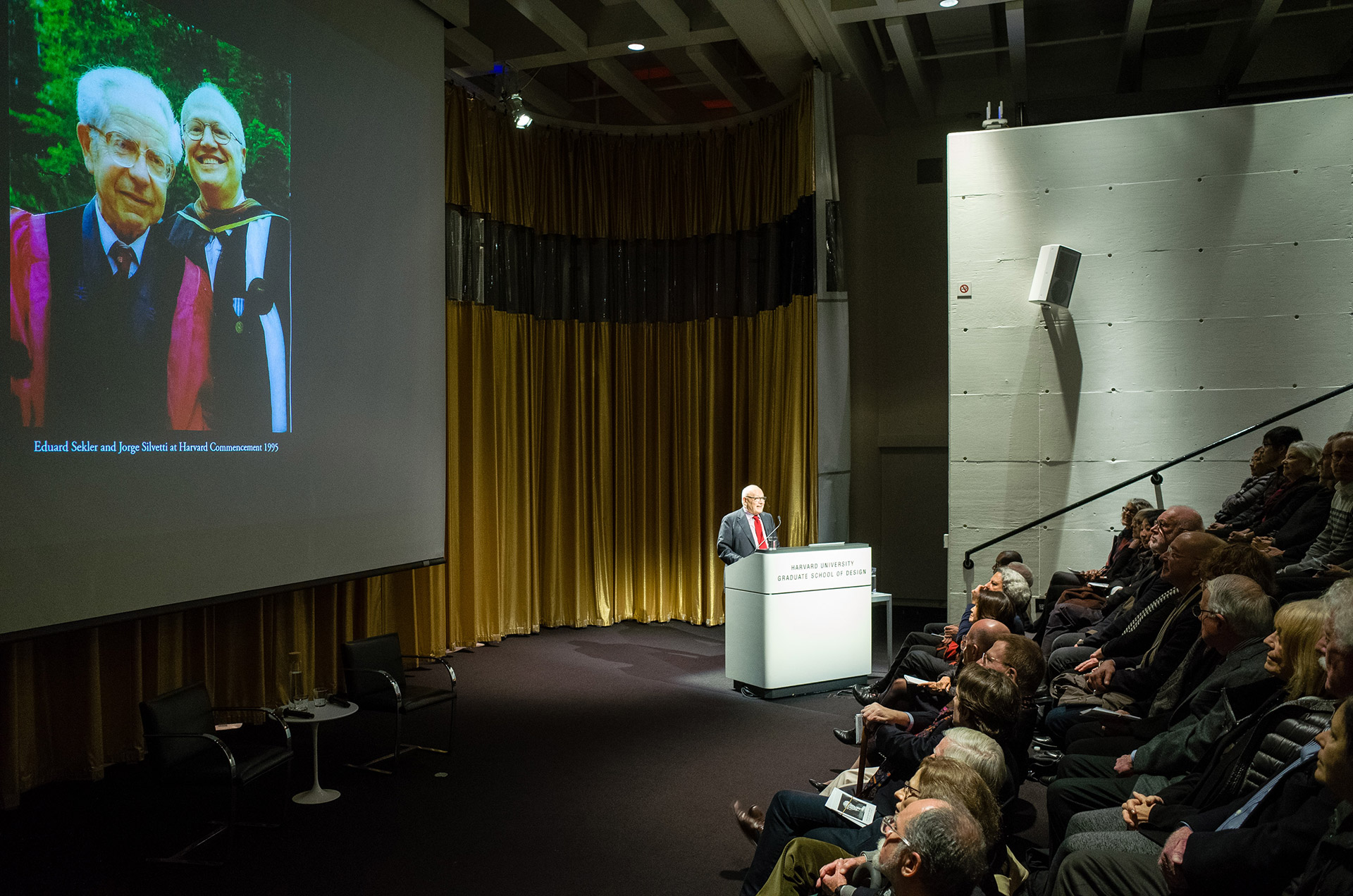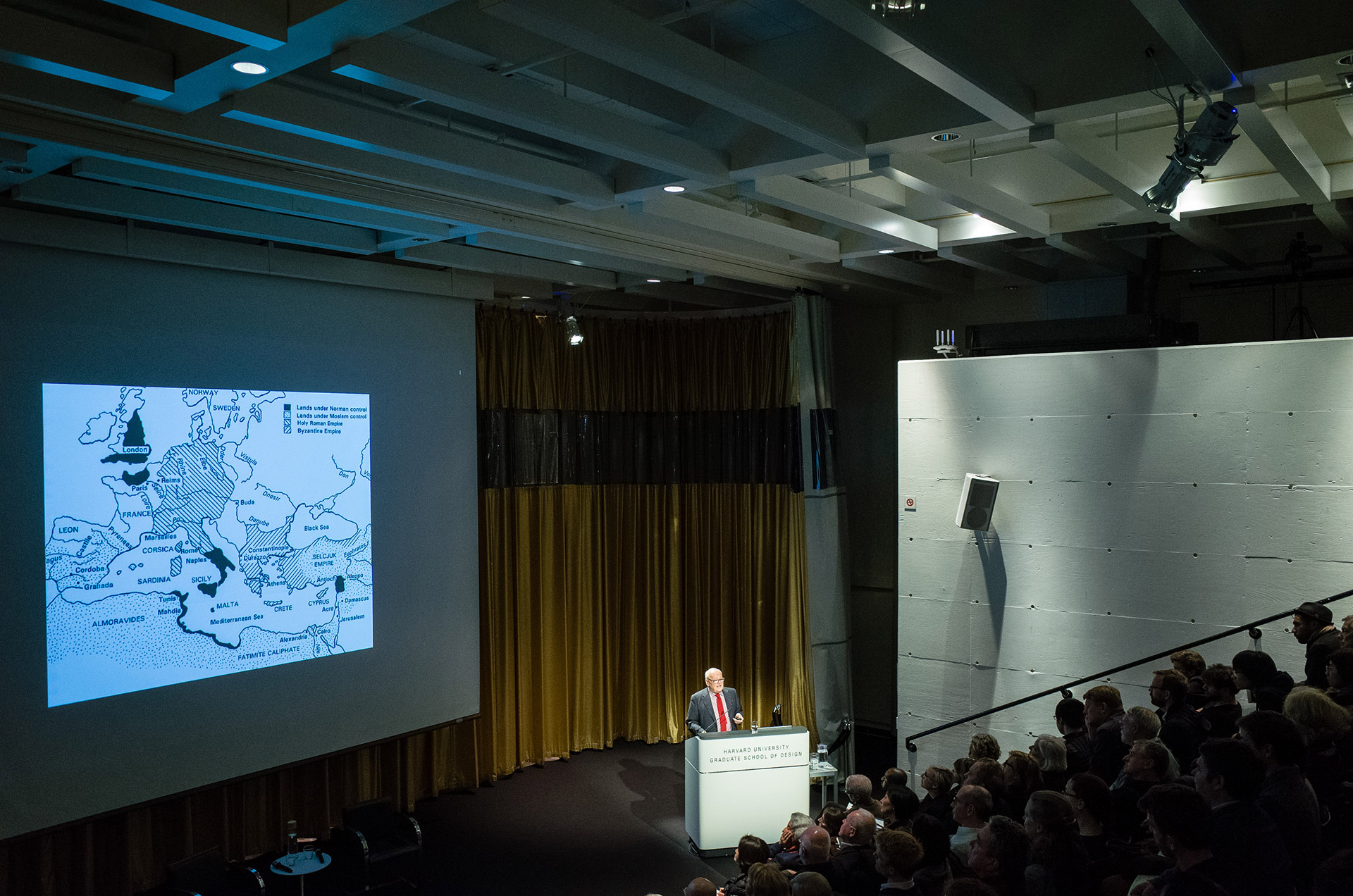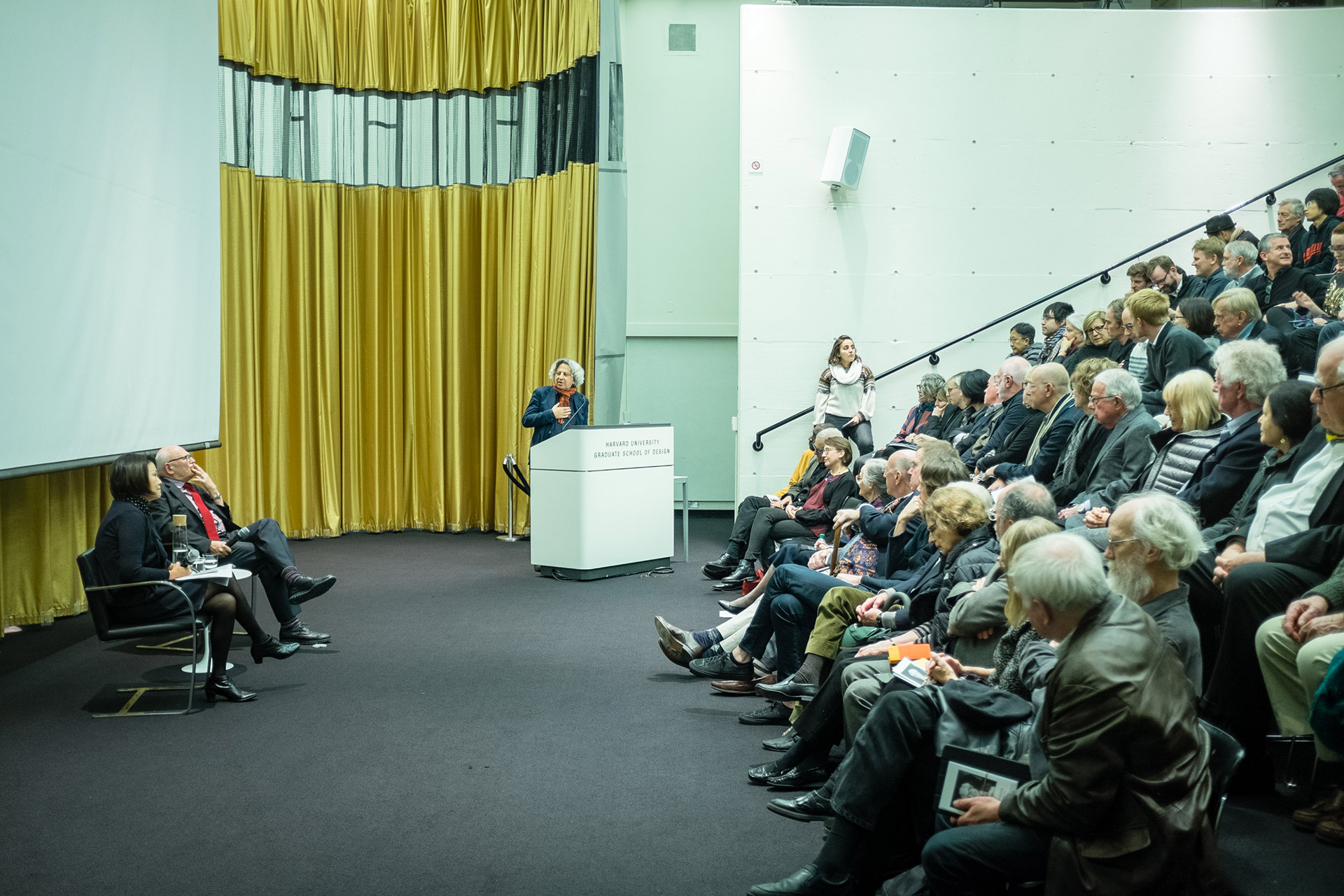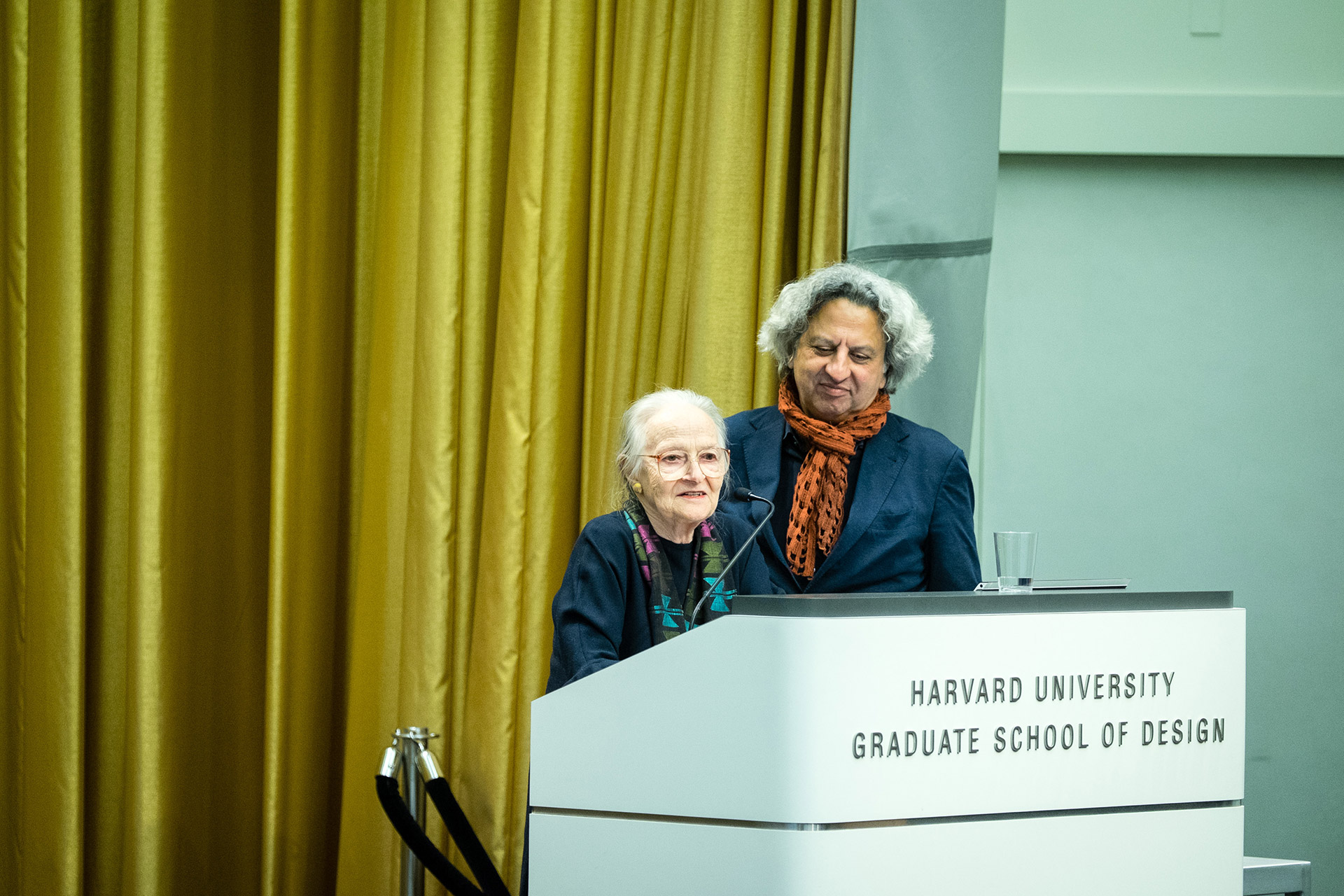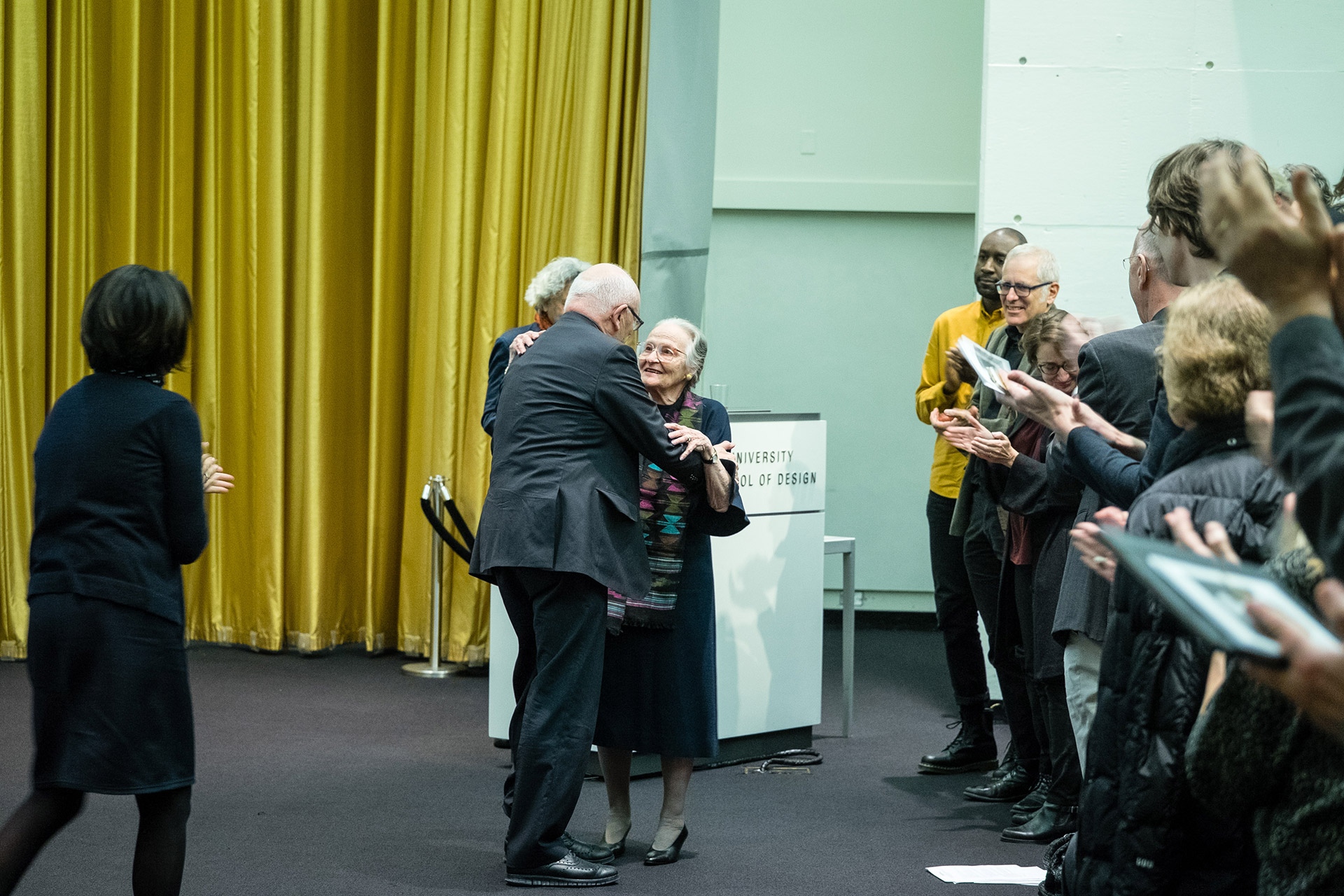Eduard Sekler Memorial Lecture: Jorge Silvetti, “TYPE: Architecture’s elusive obsession and the rituals of an impasse”
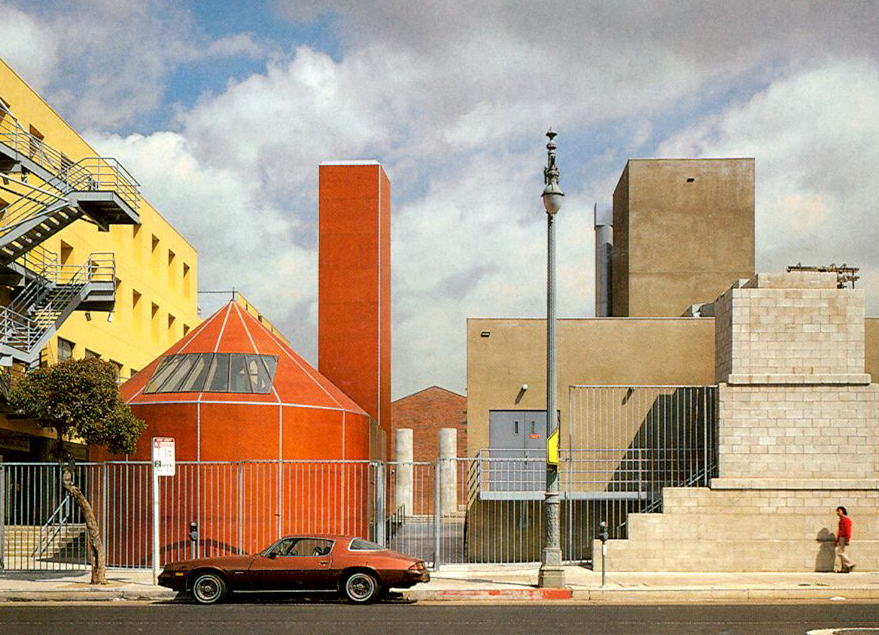
Please join us for a lecture by Jorge S. Silvetti, Nelson Robinson, Jr. Professor of Architecture at the GSD. Mohsen Mostafavi, Dean and Alexander and Victoria Wiley Professor of Design, will give an introduction to Silvetti as well as to Eduard Sekler, Harvard University’s Osgood Hooker Professor of Visual Art Emeritus and Professor of Architecture Emeritus at the Harvard Graduate School of Design, who passed away this past spring at the age of 96. Following Silvetti’s talk he will be joined by Toshiko Mori, Robert P. Hubbard Professor in the Practice of Architecture at the GSD for a conversation on the parallels between Sekler and Silvetti’s contributions to the GSD and to the wider university.
Jorge S. Silvetti is the Nelson Robinson, Jr. Professor of Architecture at the Harvard University Graduate School of Design where he has taught since 1975. He was chairman of the Architecture Department from 1995-2002. He teaches design studios (that have included The National Archives of Argentina, A Project Along the River Bilbao La Ria de Bilbao, La Reserva Ecologia of Buenos Aires, and Cordoba) and lectures on history, contemporary theory, and criticism (Architectural History I: Buildings, Texts, and Contexts from Antiquity through the 17th Century).
Since 1986, Silvetti has directed a number of research programs, including one on the urbanism and architecture of Sicily, which won a Progressive Architecture award and made him the first designer to win in all P/A award categories. Other research programs include “Buenos Aires 2000,” on the future of public spaces in the changing Latin American metropolis, and “The ria de Bilbao,” on the future development of this formerly industrial city in northern Spain. Silvetti has written on architectural theory, and his design work has been exhibited in museums and galleries worldwide. In 1986, he was awarded the Rome Prize of the American Academy in Rome. Since 1996, he has served as a juror for the Pritzker Architectural Prize, and in 2000 he became a juror for the Mies van der Rohe Prize for Latin American Architecture. Silvetti received the Dipl Arch from the Universidad de Buenos Aires and the MArch from the University of California at Berkeley.
His architecture firm, Machado and Silvetti Associates, was founded in 1974 and has received numerous honors for design projects, including three awards from the American Institute of Architects, nine Progressive Architecture awards and citations, seven Boston Society of Architects awards, and eight design awards from the New England AIA chapter. In 1991, the firm was given the First Award in Architecture by the American Academy of Arts and Letters. The firm’s notable projects include work at Princeton University, Harvard University, Rice University, Arizona State University, the University of Arkansas, the University of Utah, the American University of Beirut, as well as a public library branch in Boston, a private development in Boston, and a new center of comparative archaeology at the Getty Villa in Malibu, California.
Eduard Franz Sekler, Harvard University’s Osgood Hooker Professor of Visual Art Emeritus and Professor of Architecture Emeritus at the Harvard Graduate School of Design, passed away last week at the age of 96. An architect and historian of architecture, Professor Sekler first came to Harvard in 1953, as a Fulbright Scholar. Two years later, Graduate School of Design Dean Josep Lluis Sert invited him to join the GSD faculty. From 1966 to 1976, he served as the first director of the Carpenter Center. He co-founded Harvard’s Visual and Environmental Studies (VES) department in 1968, alongside the late Albert Szabo. All told, Professor Sekler served on the Harvard University faculty for over 50 years.
A native of Vienna, Professor Sekler received professional training in architecture at the Vienna University of Technology before moving to London to study under Rudolf Wittkower at the School of Planning and Regional Research. He graduated with a PhD in the history of art from London University’s Warburg Institute in 1948, and came to the United States as a Fulbright Fellow in 1953. Among his many contributions to Harvard, Professor Sekler co-founded the University’s Visual and Environmental Studies department in 1968.
A prolific writer, Professor Sekler authored, among other publications, Wren and His Place in European Architecture (1956); Research and Criticism in Architecture (1957); and co-authored with William Curtis Le Corbusier at Work: The Genesis of the Carpenter Center for the Visual Arts (1978). He was the recipient of numerous grants and awards throughout his career, including a Guggenheim Fellowship for the morphological study of selected historic urban spaces in Europe and Asia.
In addition to his academic pursuits, Professor Sekler was a passionate advocate for the preservation of cultural and architectural sites around the world, and worked with UNESCO on a number of projects. He was particularly dedicated to the conservation of Nepal’s Kathmandu Valley after first visiting the region in 1962. Ten years later he led the international UNESCO team for the “Masterplan for the Preservation of the Cultural Heritage of the Kathmandu Valley,” and in 1991 he founded the Kathmandu Valley Preservation Trust (KVPT), an organization dedicated to safeguarding the built heritage of the region.
Toshiko Mori is the Robert P. Hubbard Professor in the Practice of Architecture at Harvard University Graduate School of Design and was chair of the Department of Architecture from 2002 to 2008. She is principal of Toshiko Mori Architect, which she established in 1981 in New York City. Mori taught at the Cooper Union School of Architecture from 1983, until joining the Harvard GSD faculty with tenure in 1995. She has been a visiting faculty member at Columbia University and Yale University, where she was the Eero Saarinen Visiting Professor in 1992. Mori has taught courses on the tectonics of textiles, materials and fabrication methods in architecture, structural innovations, and the role of architects as agents of change in a global context. Her recent studio classes have partnered with international non-profits to develop community center and performing arts center prototypes.
Toshiko Mori Architect’s current work includes public New York City theater and library projects, a park visitor center in the Bronx, the Hudson Yard Park and Boulevard, and subway canopies. Mori designed institutional projects for Brown University and Syracuse University, and is part of the design team for New York University’s masterplan. She also designed the award winning Visitor Center at Frank Lloyd Wright’s Darwin D. Martin House compound in Buffalo, NY, as well as the Center of Excellence in Environmental and Energy Systems for Syracuse University. Residential projects include work in Maine, Massachusetts, New York, Mongolia and Taiwan.
Mori’s strong research-based approach to design has been commended in invitations to lectures and conferences around the world. As a member and former-chair of the World Economic Forum’s Global Agenda Council on Design, Mori has participated in sessions to discuss scarcity-driven design, the future of cities and urban information systems, design related to olfactory sensation and experience, and the role of the arts in improving communities. She has participated in international symposia and conferences, including panels held at the MoMA, Guggenheim Museum, and the G1 Summit in Japan. In 2010, Mori was selected to speak at the annual Women of Architecture lecture series at the National Building Museum. She has lectured at universities across the country and around the world.
Mori has received numerous awards and her work has been widely exhibited and published. In 2003 Mori was awarded the Cooper Union Inaugural John Hejduk Award. In 2005, she received the Academy Award in Architecture from the American Academy of Arts and Letters, and the Medal of Honor from the AIA New York Chapter. Her work was exhibited in the Cooper-Hewitt National Design Museum’s “Design Life Now: National Design Triennial 2006” and at the Guggenheim Museum. She has contributed to various publications, and edited a volume on material and fabrication research, Immaterial/Ultramaterial. A monograph of her work, Toshiko Mori Architect, was published by Monacelli Press.
In 2009, she established a think tank, VisionArc, which connects local and global issues to mobilize design initiatives for a more sustainable future. Mori presented this research at the Singapore Icsid World Design Conference and the Bilbao Bizkaia B Award Design Festival. The research aims to locate new opportunities to embed design into higher channels and broader fields of practice.
Anyone requiring accessibility accommodations should contact the Public Programs Office at (617) 496-2414 or [email protected].
#GSDEVENTS
